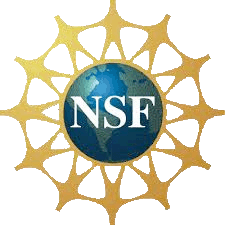
We Can Figure This Out.org
 |
New Home of the UVA Virtual Lab:
We Can Figure This Out.org |
|
| > WCFTO Home > Nano Home > Nanoscience for Elementary & Middle Schools |
|
It is fairly easy to repackage our class material for high school students. But can nanoscience also be brought into primary and middle school grades? We explored that challenge in compressed (one week long) summer versions of our nanoscience class taught for Virginia K-12 science teachers. During that week the teachers attended all of the normal class's lectures, discussions and labs. But their homework (completed during the fall) was to then come up with a nanoscience lesson plan for their own students. The results were fascinating:
Casey Moore wanted to give her students a visceral feel for how small a nanometer is. She asked the students what was the smallest thing they had ever seen in their classroom microscopes: they answered "a brine shrimp." Using a simple viewgraph ruler, the students then measured the length of a brine shrimp. They then estimated that at full magnification they might be able to see a single cell swamp organism. Casey then walked the students out onto her school's 100m long playing field and worked with them to answer the question "if a single cell organism were were as long as this field, how long would a nanometer be, and how long would the brine shrimp be?" Casey Moore's Nano Lesson Plan (ppt file) Kathleen Stansbury & Dorthea Martin's Nano Lesson Plan (above, as slides playing in a video) Kathleen Stansbury and Dorthea Martin were instead struck by the strange way in which scanning microscopes construct their images a single point at a time (as with the class's atomic force microscopes they are shown using above). But how to explain this to middle schoolers? They decided to turn their middle schoolers into scanning microscopes! That is (in what became the student's favorite game), one blindfolded student would move slowly across the floor calling out when he/she encountered objects, while their partner plotted out the floor tile positions of those objects to generate a scanned "nanoimage" of the classroom. If any other teachers have nanoscience lesson plans they'd like to have added to this page,
Copyright: John C. Bean |